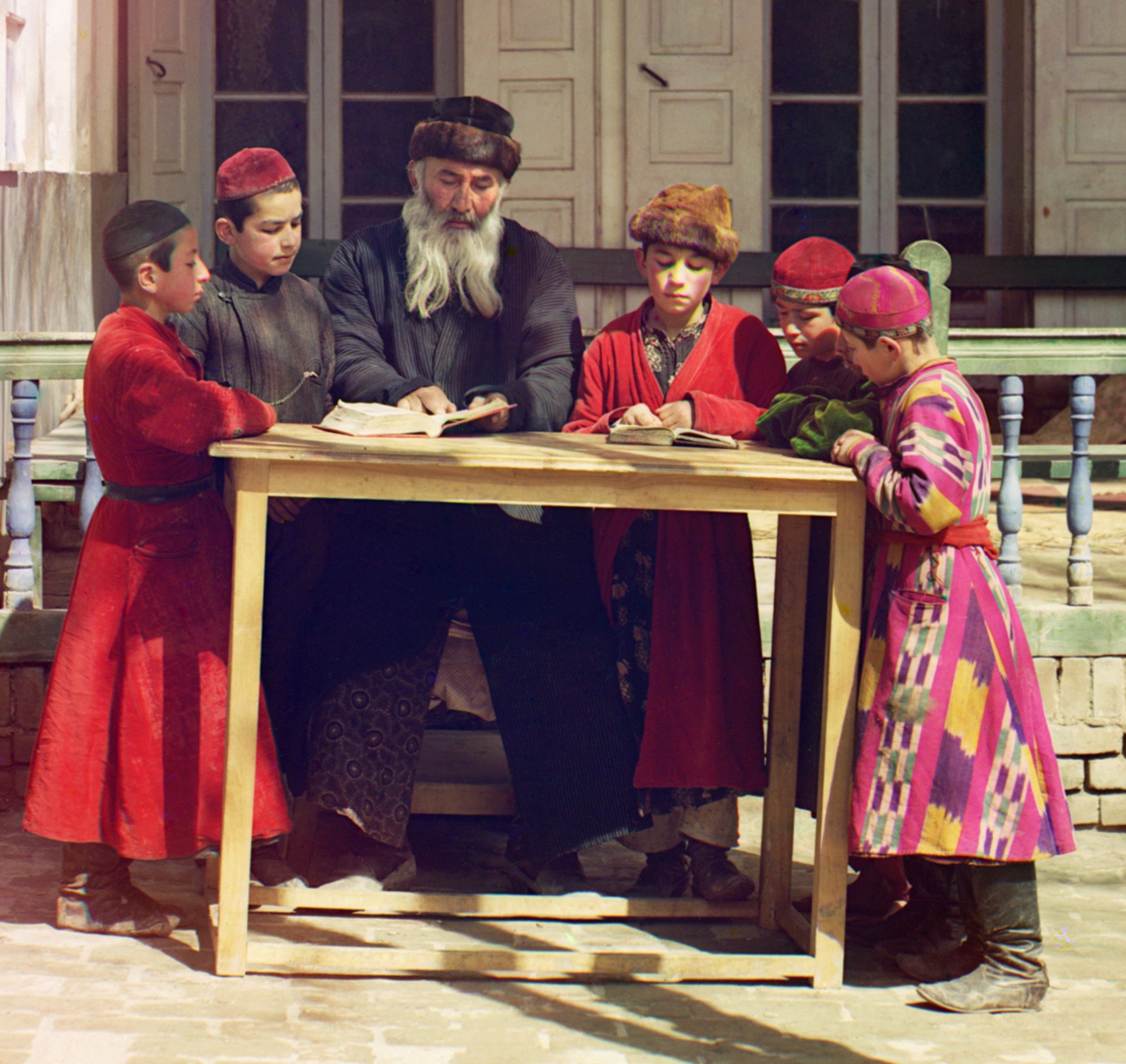Jews in Uzbekistan on:
[Wikipedia]
[Google]
[Amazon]
 The history of the Jews in Uzbekistan refers to the history of two distinct communities; the more religious and traditional
The history of the Jews in Uzbekistan refers to the history of two distinct communities; the more religious and traditional
JTA
 The history of the Jews in Uzbekistan refers to the history of two distinct communities; the more religious and traditional
The history of the Jews in Uzbekistan refers to the history of two distinct communities; the more religious and traditional Bukharan Jew
Bukharan Jews ( Bukharian: יהודיאני בוכארא/яҳудиёни Бухоро, ''Yahudiyoni Bukhoro''; he, יהודי בוכרה, ''Yehudey Bukhara''), in modern times also called Bukharian Jews ( Bukharian: יהודיאני בוכאר ...
ish community and the Ashkenazi community.
There were 94,900 Jew
Jews ( he, יְהוּדִים, , ) or Jewish people are an ethnoreligious group and nation originating from the Israelites Israelite origins and kingdom: "The first act in the long drama of Jewish history is the age of the Israelites""T ...
s in Uzbekistan
Uzbekistan (, ; uz, Ozbekiston, italic=yes / , ; russian: Узбекистан), officially the Republic of Uzbekistan ( uz, Ozbekiston Respublikasi, italic=yes / ; russian: Республика Узбекистан), is a doubly landlocked co ...
in 1989, but fewer than 10,000 remained in 2021 (around 38% of which lived in Tashkent
Tashkent (, uz, Toshkent, Тошкент/, ) (from russian: Ташкент), or Toshkent (; ), also historically known as Chach is the capital and largest city of Uzbekistan. It is the most populous city in Central Asia, with a population of 2 ...
).
There are 12 synagogues in Uzbekistan.Uzbek Jewish worriesJTA
Fergana Jewish community
Semyon Abdurakhmanov is the head of theFergana
Fergana ( uz, Fargʻona/Фарғона, ), or Ferghana, is a district-level city and the capital of Fergana Region in eastern Uzbekistan. Fergana is about 420 km east of Tashkent, about 75 km west of Andijan, and less than 20 km fr ...
Jewish community. There are six synagogues in the Valley. There are several hundred Jews in Fergana, Namangan
Namangan (; ) is a city in eastern Uzbekistan. It is the administrative, economic, and cultural center of Namangan Region. Administratively, it is a district-level city. Namangan is located in the northern edge of the Fergana Valley, less than ...
, and Kokand, with about 1,300 total in the area. Abdurakhmanov has said that the biggest problem faced by the Jewish Uzbek community is the economy.
During the Andijan Massacre
On 13 May 2005, protests erupted in Andijan, Uzbekistan. At one point, troops from the Uzbek National Security Service (SNB) fired into a crowd of protesters. Estimates of those killed on 13 May range from 187, the official count of the governme ...
in May 2005, the Israeli Embassy in Tashkent asked Abdurakhmanov to make a lists of Jews "in case there will be a need to airlift people to Israel
Israel (; he, יִשְׂרָאֵל, ; ar, إِسْرَائِيل, ), officially the State of Israel ( he, מְדִינַת יִשְׂרָאֵל, label=none, translit=Medīnat Yīsrāʾēl; ), is a country in Western Asia. It is situated ...
."
Historical demographics
The Jewish population of Uzbekistan (then known as theUzbek SSR
Uzbekistan (, ) is the common English name for the Uzbek Soviet Socialist Republic (Uzbek SSR; uz, Ўзбекистон Совет Социалистик Республикаси, Oʻzbekiston Sovet Sotsialistik Respublikasi, in Russian: Уз ...
) nearly tripled between 1926 and 1970, then slowly declined between 1970 and 1989, followed by a much more rapid decline since 1989, when the collapse of Communism
The Revolutions of 1989, also known as the Fall of Communism, was a revolutionary wave that resulted in the end of most communist states in the world. Sometimes this revolutionary wave is also called the Fall of Nations or the Autumn of Natio ...
began. According to the Soviet census, there were 103,000 Jews in Uzbekistan in 1970.
Between 1989 and 2021, around ninety percent of Uzbekistan's Jewish population left Uzbekistan and moved to other countries, mostly to Israel.
In the 2021 census, there were almost 10,000 Jews in Uzbekistan, diffused over the country. Over 1,000 were in Bukhara, and almost 1,500 were in Samarkand; around 1,300 were in Fergana, and over 3,700 were in Tashkent. The remaining 2,300 were spread around the country in smaller numbers.
See also
* History of the Jews in Central AsiaReferences
{{Asia in topic, History of the Jews in